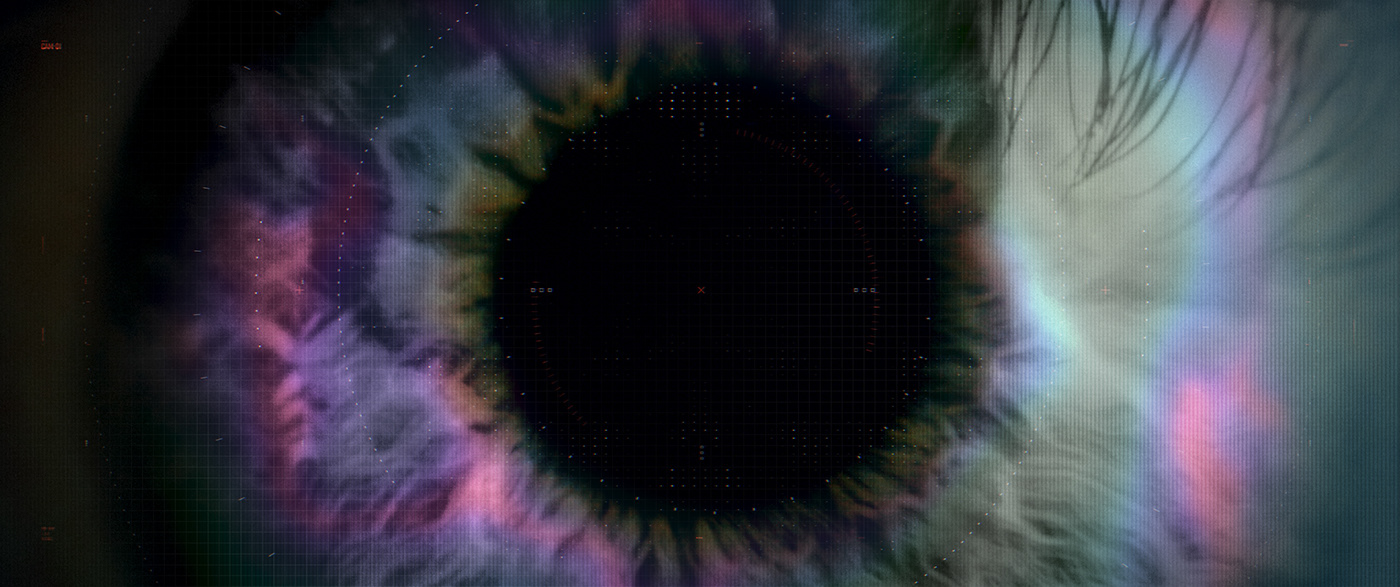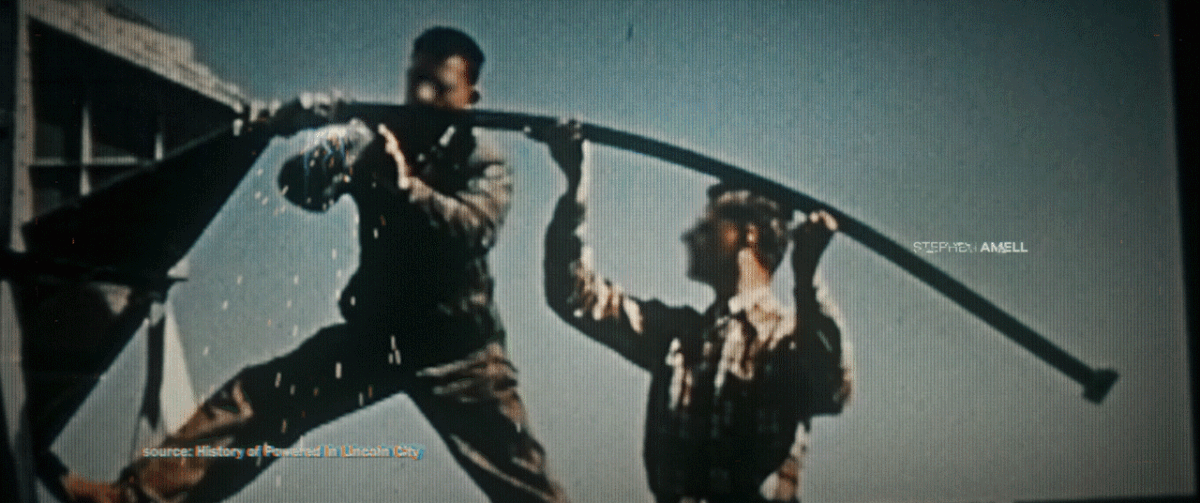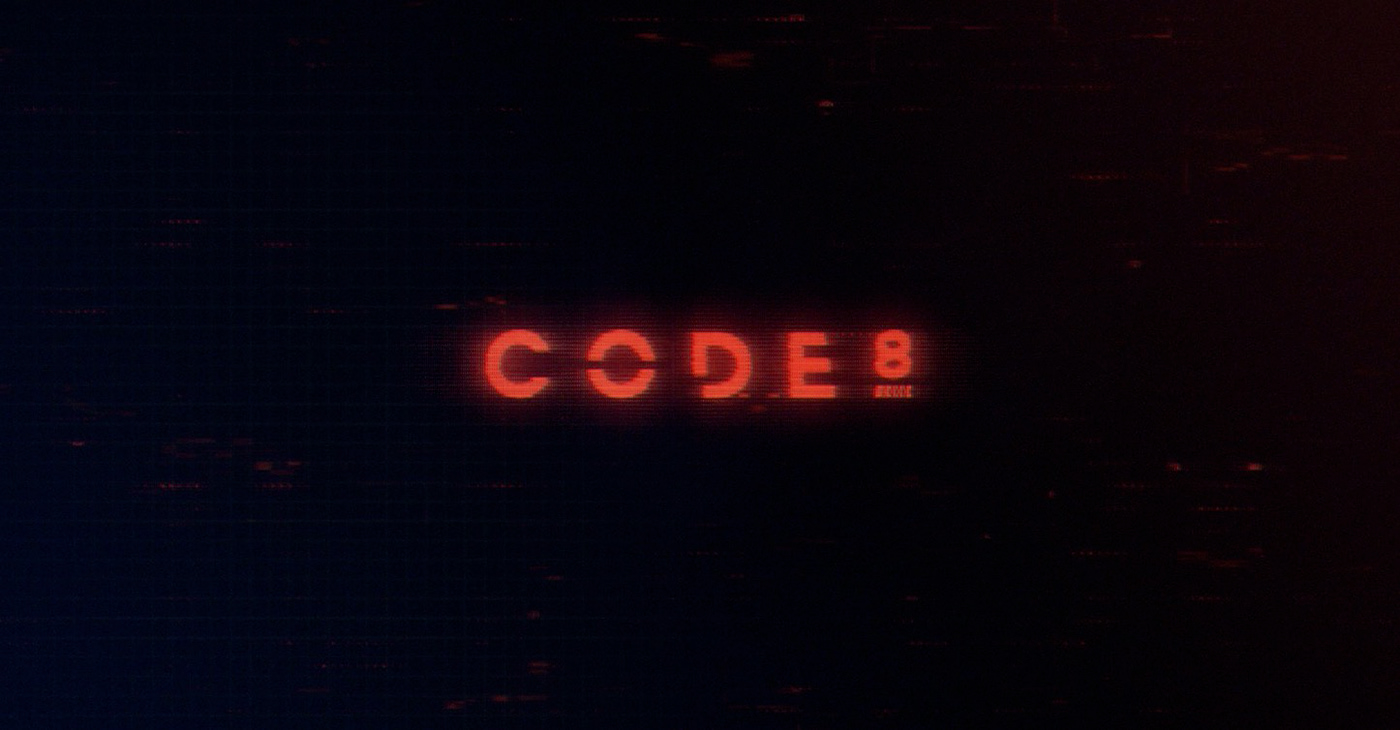Studio: REACTIV | Executive Producer: Anna Junger | Creative Director & Editor: Alon Isocianu | Art Director: Joshua Michie |
Motion Designer: Dylan Carquez | CG Artist & Animation: Hasan Dadah | Creative Coordinator: Sage Whitworth | Colorist: Wade Odlum |
Sound Design: Jeff Moberg | Music: Ryan Taubert | Additional VFX: Playfight |
Code 8 is a gritty sci-fi thriller that follows Connor Reed (played by Robbie Amell), a man with the extraordinary ability to generate and manipulate electricity, as he is thrust into a dangerous world of crime, in an effort to save his dying mother. The film is set in LINCOLN CITY, where 4% of the population possess abnormal abilities. These people are classified as "power enabled". Director & Producer Jeff Chan, along with Writer/Producer Chris Paré approached REACTIV to create an opening title sequence that establishes the universe that Code 8 takes place in. The challenge put forward was to create a visually striking opening sequence that distills 50 years of Lincoln City history, along with the journey of "Power Enabled" people, as well as establish the growing conflict between the city's Drug cartel and the increasingly militarized police force.

Alon Isocianu - Creative Director: This is was a really interesting challenge for us because we had a very specific narrative objective (to tell the history of powered people in Lincoln City, establish the popularization of the “Psyke” drug and the drug trade, the subsequent marginalization of “Powered People” and finally - the aggressiveness & increased militarization of the Lincoln City Police force) and do so without a lot of practical initial assets to work with. Chris, the film’s screenwriter, provided me with an outline of the important key pieces of information we wanted to convey. Jeff Chan, the film’s director, was really interested in setting an authentic, “realistic” tone to the opening, which would play into the film’s gritty style overall. We looked at various reference on how to weave together docu-style exposition into one sequence (we looked at sequences from District 9, World War Z, Dawn of The Dead and a few others). The hardest part was being able to start with no specific script or any real assets to work off of. What I decided to do was to create an edit using just licensed archival footage, and then write specific sound-bites to re-contextualize the footage within our film’s narrative. Once we had the basic structure and pacing of the opening we were able to open things up significantly using CG, VFX and Motion Graphics to create completely new assets/shots that played right into our narrative. While the end result did include a fair bit of licensed footage, each frame has been entirely re-contextualized in some manner. We also ended up shooting some footage that would be used throughout the opening, as well as creating some fully CG shots. The end result is a seamless blend of all of these elements together.
Where we landed conceptually. was a sequence that established the world of Code 8 through the eyes of the media over several decades. This would then be layered with an “Artificial Intelligence” UI that would slowly reveal itself throughout the sequence, constantly scanning and analyzing the footage. This ominous UI represented the LCPD’s (Lincoln City Police Dept) watchful eye and frightening technology. On top of this, we would then add a 3rd layer of analog and digital signal disturbance which is a direct nod to the main character, Connor, and his electric abilities which would often be used to disrupt the LCPD’s technology throughout the film. Joshua Michie, our amazing art director, was able to develop some really unique approaches to manifesting these 3 layers while also creating really purposeful typography style to the credits. Dylan Carquez headed the motion-graphics animation process, and took Joshua’s designs to the next level. Hasan Dadah came through with some much needed photoreal CG shots that we were able to pepper through the sequence seamlessly. Finally Jeff Moberg sound design really tied the sequence together, mixed with a brilliant original score from Ryan Taubert.

The sequence begins with a montage of archival footage from several fictional documentaries (spanning the 1940s - 1970s) that depict how “Powered People” were welcomed into Lincoln City in order to help create infrastructure and build the city. We used actual archival footage but augmented these shots heavily, through VFX, to highlight “powered people”abilities. The LCPD’s Artificial Intelligence UI begins to rear its head subtly throughout this opening.
Jeff Moberg - Sound Designer: The approach for sound was to design an immersive soundscape that would highlight the progress of technology from a point in the distant past to a very near future. We began by giving dialogue a vintage treatment, layered with sounds of “tech nostalgia” - projectors, VHS tape tracking/glitches, and analog TV switches. As the sequence progresses, we introduced more detailed sounds that support the news clip footage, and more of a digital sound to the dialogue glitches. The sound design continues to evolve from there, becoming more modern and stylized through the use of synth effects, low-end impacts, and robotics/servos.




When the sequence arrives to the late 1990s - mid 2010s period, we needed to start showing the effects of the Psyke drug, along with the decaying state of Lincoln City with the rise of the drug cartels. All the while, "powered people" continue to become marginalized within this society. To do this we shot some of our own footage at our studio, as well as created a slew of digitally fabricated TV news pieces. As the sequence unfolds, the underlying element of AI surveillance becomes more apparent, as the images begin to break-apart digitally and are now more visibly analyzed by a menacing UI.




The sequence then takes a frantic turn into a world in panic. After public outcry & protests, Lincoln City police force, with the blessing of both municipal and federal government officials, amplifies their surveillance presence and beefs up their militaristic resources. Advancements in technology allow the LCPD to introduce the Guardians (Robotic police officers) and high-powered Drones. We were able to tell this story by leveraging some incredible assets from our friends at Playfight VFX who designed and created the Guardian Robots. We also filmed a bunch of footage that we were able to treat and composite together to create the facial recognition & thermal-view visuals. At this point, the surveillance AI that's enveloped the entire sequence is now fully apparent - analyzing every frame and pixel. We loved this "surveillance overload" aesthetic that layered the narrative's technology (robots, facial recognition, thermal-view etc.) along with the AI surveillance UI. It created a multilayered complexity that felt incredibly scary.








The final stretch of the title sequence is what leads us to "present day" where our film takes place in. This ending montage brings together all the voices of both PRO and ANTI "powered" individuals - layered together in an overwhelming panic. The images become completely destabilized. The idea to have total signal disruption was inspired by the film's protagonist Conor. In the film he is able to short-circuit various surveillance and robots, and we realized this was a great way to not only give a nod to the main character, but also represent the precarious and chaotic state of Lincoln City. We utilized a series of glitch techniques to accomplish this, and went as far as to re-process the footage several times through CG glass dispersion textures. The end result is a cacophony of visual and sounds that take the viewer to the edge - before revealing the final title lock-up.








Joshua Michie - Art Director: A recurring question we kept playing with, was what this would look like as an A.I. How it might see it’s own history nearing sentience. We had a few conversations about the militarization of the police force and how A.I. would be the big brother guiding decisions. We researched identification tech: facial recog; silhouette profiling; geo tagging; etc. Parallel to that “glitch” was often brought up so we thought about what data sorting, data moshing, and techniques on image recycling loops could bring to the table. Our first instinct was to use the popular pixel sorting look but a couple tests proved the visuals would be too busy in concert with the fast pace of the edit.
There were 2 visual cues we dove into. The first was an identification/classification system that would act as the machines growing understanding of the world it lives in. Dylan Carquez was instrumental in creating the UI elements that dance throughout the narrative. I love how well it starts out subtly then builds to the forefront and things heat up towards the climax. The second cue explored quadtrees. This technique takes the black and white values of an image and create quadratic compositions. A tip of the hat to the fine folks at Entagma for their teachings on the technique. It was a clever idea that supported the glitch aesthetic that would be a little different from the pixel sorting and data moshing techniques that are popular in the mograph world.





Joshua Michie - Art Director: Typographically, we looked into a family that would call out to corporation, activism and could be both menacing and inviting. We wanted something that would reinforce the oppressive nature of the subject matter and it had to look good when animated. Dylan Carquez and I fleshed out the choreography of the credit slates. Something that would assemble and break with a nice staccato rhythm to it. He was instrumental in locking down the complexity of the typographic animations.








Joshua Michie - Art Director: The Team meshed well and decided to revisit the Code 8 logo. The original was rooted in a type treatment that was used on the police costumes so we knew it needed to have an oppressive authoritarian, dark future look. Making sure there was a unifying look and feel between the logo and the title sequence, we ended up with a title slate that really fit the universe. I was really happy when the filmmakers ended up adopting the logo into the supporting marketing material.
Alon Isocianu - Creative Director: What I love about the final Code 8 Logo reveal, apart from the precise and elegant (yet authoritative) design that Josh came up with, is the way we went about treating the animation. It was important to me that we ended on a logo lock-up that felt a bit alarming, as "Code 8", by it's definition in the film, is a police code. I believe Dylan came up with the idea of making it red throughout (we kept playing around with it starting in red, and then turning white for the resolve, but it never felt right. In addition to the color scheme, Josh and I also developed a glass dispersion layer that we overlaid on top of the entire opening title sequence - and this made the end logo animation feel more authentic. It's almost like there's a subtle piece of glass sitting on top of the image at all time, causing very subtle color dispersion and it separates the viewer from this gritty universe in a way that feels cold and helpless, like we're watching this unfold and there's nothing we can do about it. For the end logo animation we amplified the distortion of the text to really highlight the "signal disruption" (which in my mind represented Conor's electric powers that are causing the disruption).
Jeff Moberg - Sound Designer: The sound in the Code 8 end title animation is my own voice saying “Code 8,” which I processed with digital bit crushing, subtle distortions, and EQ to the point that it’s almost unrecognizable as a human voice. I cut up that processed recording to match the visual glitches we see on screen, and layered that sound with some electromagnetic recordings of my computer screen to create subtle static pulses.
play above video to hear the sound design in the Code 8 Logo reveal









